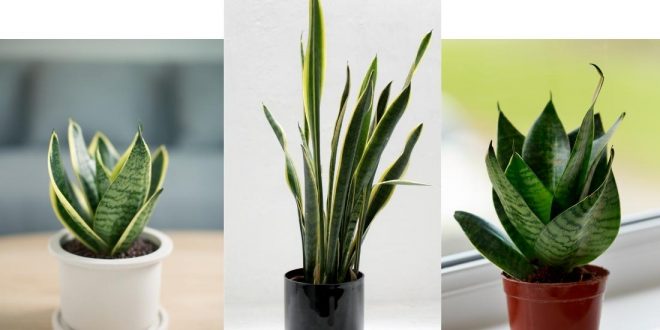What is Snake Plant
Snake Plants (Dracaena trifasciata), also known as Mother-in-Law’s Tongue or Saint George’s Sword, are among the most popular houseplants for good reason. With their striking, sword-like leaves and ability to thrive in almost any indoor environment, they are a favorite choice for both beginner and experienced plant enthusiasts. In this detailed guide, we’ll explore everything you need to know about Snake Plant care, from sunlight and watering needs to propagation and fun cultural facts.
Why Choose a Snake Plant?

Snake Plants are incredibly versatile and resilient. They can survive in low-light conditions, tolerate periods of neglect, and even improve indoor air quality. In fact, NASA’s Clean Air Study found that Snake Plants can absorb toxins like carbon dioxide, benzene, and formaldehyde while releasing oxygen at night. This makes them perfect for bedrooms and other living spaces.
Additionally, Snake Plants come in various stunning varieties, including:
- Laurentii (yellow-edged leaves)
- Bantel’s Sensation (narrow, white-striped leaves)
- Hahnii (compact rosette form)
- Golden Hahnii (yellow variegations)
- Silbersee (silver-green tones)
No matter your aesthetic preferences, there’s a Snake Plant variety to suit your style.
Snake Plant Care: Essential Tips for Success
Caring for a Snake Plant is straightforward, but understanding its specific needs will help it thrive. Let’s dive into the key aspects of Snake Plant care.
How Much Sunlight Does a Snake Plant Need?
- Snake Plants are highly adaptable and can grow in a range of lighting conditions. However, they prefer bright, indirect sunlight for optimal growth.
- Avoid placing your plant in direct sunlight, as this can scorch the leaves. If your space has limited natural light, don’t worry—Snake Plants can tolerate low-light environments, though growth may be slower.
How To Watering Snake Plant and Humidity
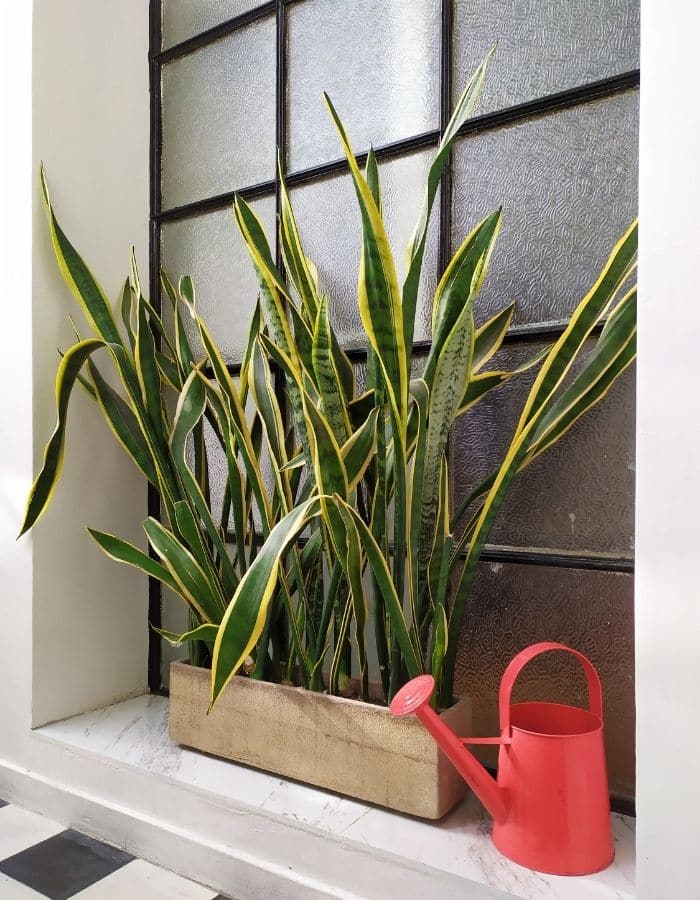
- Snake Plants are drought-tolerant succulents, meaning they store water in their thick leaves. Overwatering is the most common mistake, so always let the soil dry completely between waterings.
- Water your Snake Plant every 2-3 weeks in the summer and once a month in winter. Reduce watering during colder months when the plant’s growth slows.
- Avoid letting water collect in the saucer beneath the pot, as this can lead to root rot. Proper drainage is essential.
Dracaena Snake Plant Temperature Tolerance
- Snake Plants thrive in temperatures between 12°C and 30°C (54°F to 86°F). They dislike sudden temperature changes and should be kept away from cold drafts or air conditioning vents.
- Ensure the environment stays above 12°C (54°F), as colder temperatures can damage the plant.
Snake Plants Soil and Drainage
- Snake Plants require well-draining soil to prevent root rot. Use a cactus or succulent mix, or make your own by combining regular potting soil with sand or perlite.
- Adding pumice or small gravel to the soil mix can further improve drainage.
Snake Plant Fertilizer
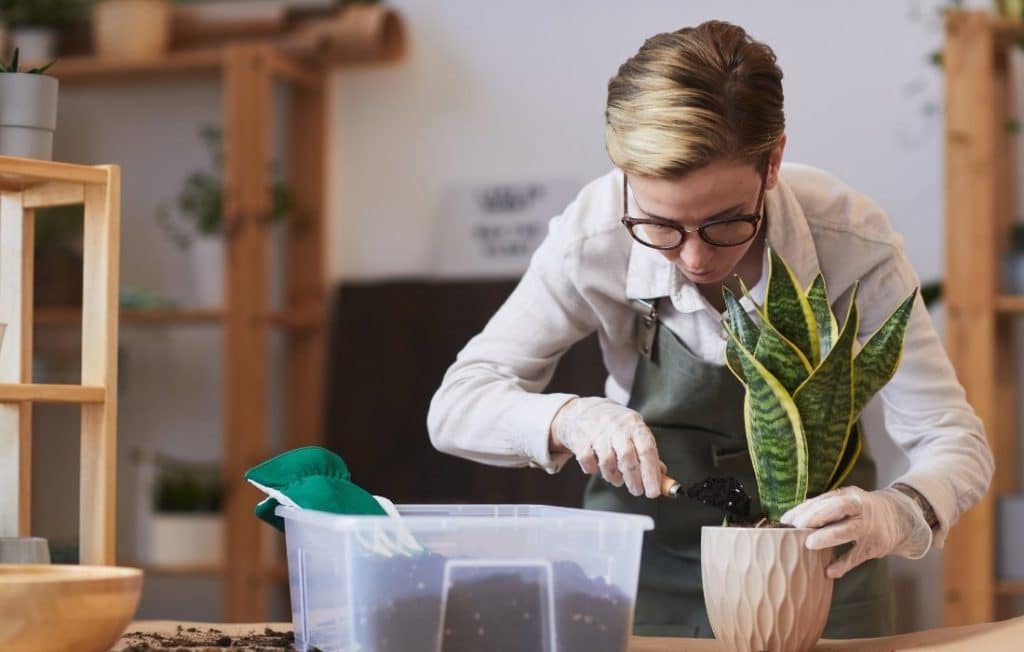
- Fertilize your Snake Plant sparingly during the growing season (spring and summer). Use a balanced houseplant fertilizer once a month to provide nutrients.
- If your plant is thriving, additional fertilizer may not be necessary. Avoid fertilizing during the winter months when growth slows.
Pruning A Snake Plant
- Pruning is only necessary to remove damaged, yellowing, or wilted leaves. Use clean scissors or shears to trim these leaves at the base.
- After flowering, cut the flower stalk to maintain the plant’s appearance. Seal the cuts with wax to prevent drying and infection.
How To Propagate Snake Plant?
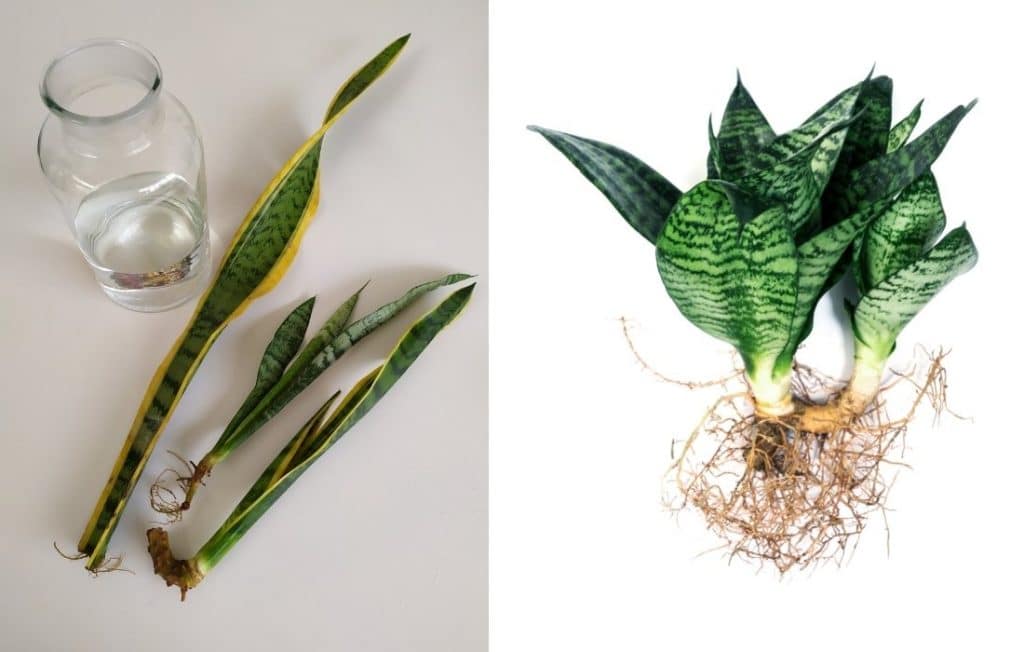
- Snake Plants are incredibly easy to propagate, making them perfect for sharing with friends or expanding your collection. You can propagate them using leaf cuttings, division, or offsets (small shoots growing at the base of the plant).
- For leaf propagation, cut a healthy leaf into sections and place them in soil or water until roots develop. Once rooted, transfer them to a pot with well-draining soil.
- To propagate offsets, carefully separate the baby plants from the mother plant, ensuring the rhizomes (underground stems) remain intact.
How To Repot a Snake Plant?
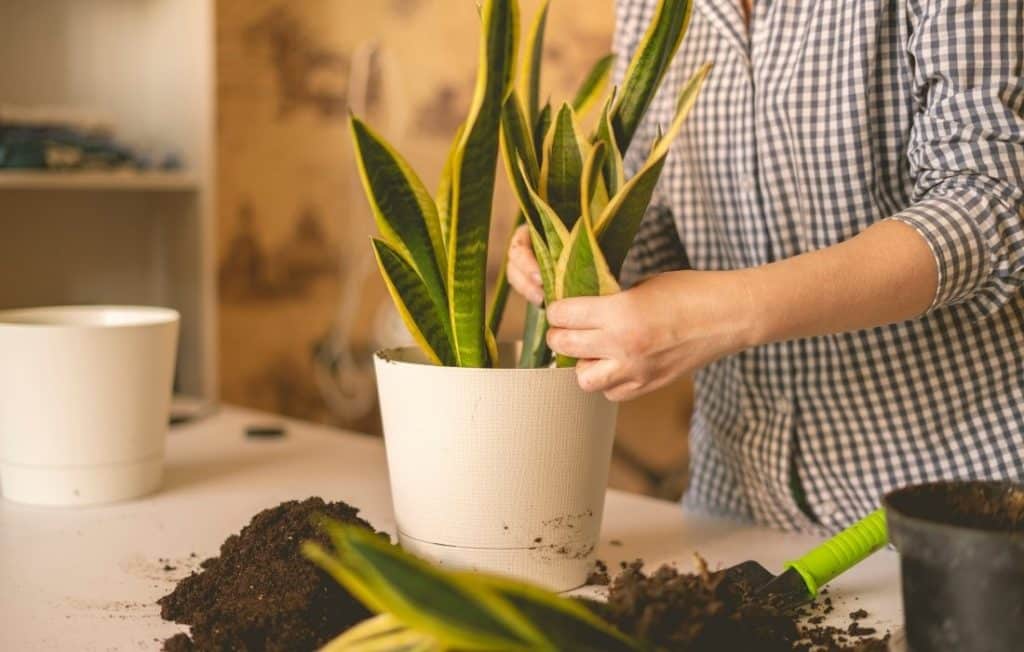
- Snake Plants grow slowly and don’t require frequent repotting. However, if your plant becomes root-bound or the leaves grow too tall, repotting every 1-2 years is recommended.
- Choose a pot with drainage holes and slightly larger than the current pot to allow room for growth.
Snake Plants Pests and Diseases
- Snake Plants are relatively pest-resistant but can occasionally attract mealybugs, spider mites, or scale insects. Wipe the leaves with a damp cloth and use insecticidal soap if needed.
- Overwatering can lead to fungal infections or root rot. Always ensure proper drainage and avoid excessive watering.
Snake Plant Care Tricks and Tips
- Position your Snake Plant near a light source to maintain its upright, structural form.
- Use stakes or supports if the leaves grow tall and need extra stability.
- Mix sand, pumice, or perlite into the soil to enhance drainage.
- Keep the plant away from wind sources, as drafts can hinder growth.
- Rotate your plant occasionally to ensure even light exposure and balanced growth.
Fun Facts and Cultural Beliefs
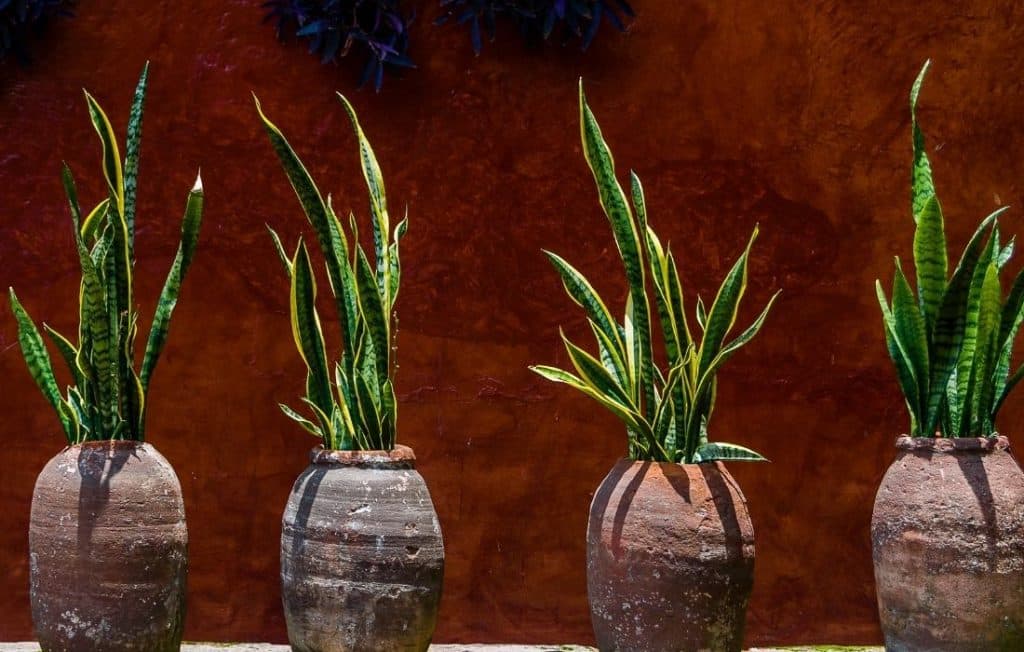
Snake Plants are not just beautiful—they’re steeped in cultural significance and fascinating beliefs:
- In China, Snake Plants are thought to bring good fortune and bestow the eight virtues of the Eight Gods, according to Feng Shui.
- In Turkey, it’s believed that if the leaves grow longer than 1 meter and bloom, the owner will gain wealth.
- In Barbados, Snake Plants are called “Money Plants” because they symbolize prosperity.
- In Nigeria, they are linked to rituals involving Orisha-Ogun-Oya and are believed to ward off the evil eye.
Snake Plant Toxicity Warning
While Snake Plants are safe to touch, their leaves contain saponins, which are toxic if ingested. Keep the plant out of reach of children and pets to avoid accidental consumption. If ingested, seek medical attention immediately.
Snake Plant Benefits
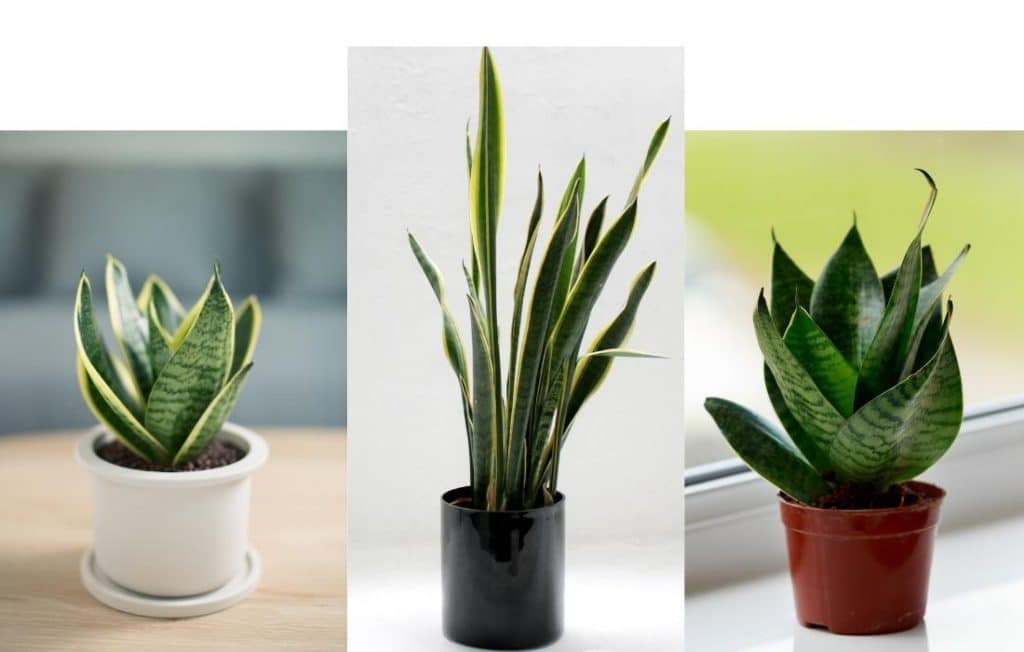
Air Purification: Snake Plants absorb toxins and release oxygen, improving indoor air quality.
- Low Maintenance: Perfect for busy individuals or beginners, Snake Plants require minimal care.
- Aesthetic Appeal: Their striking leaves and variety of patterns make them a decorative addition to any space.
- Resilience: Snake Plants can survive neglect, making them ideal for people who travel or forget to water their plants.
Conclusion
Snake Plants are truly remarkable indoor plants that combine beauty, functionality, and ease of care. Whether you’re looking to purify your home’s air, add a touch of greenery, or enjoy a low-maintenance plant, Snake Plants are an excellent choice. By following the tips outlined in this guide, you’ll ensure your plant thrives and remains a stunning focal point in your space.
Start your journey with Snake Plant care today and discover why this resilient and elegant plant is a favorite among plant lovers worldwide. With proper care, your Snake Plant will flourish for years to come, enhancing your home with its beauty and benefits. If you liked this article Easy To Care Indoor Plants may interest you

